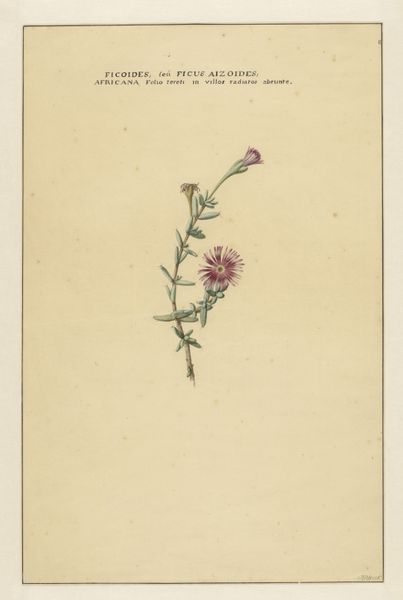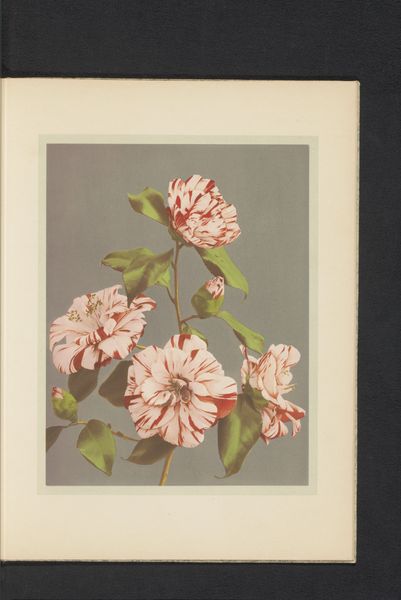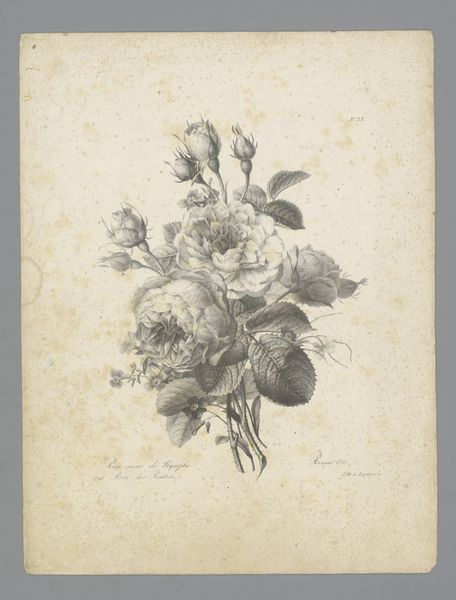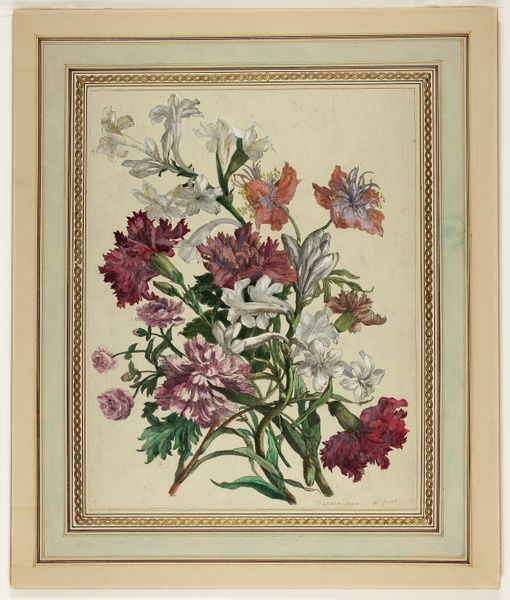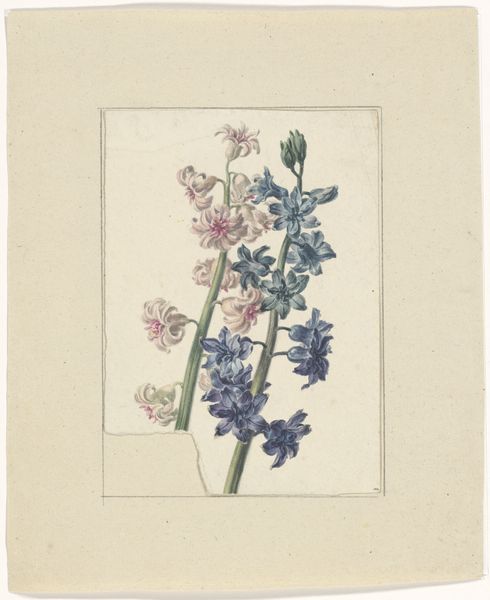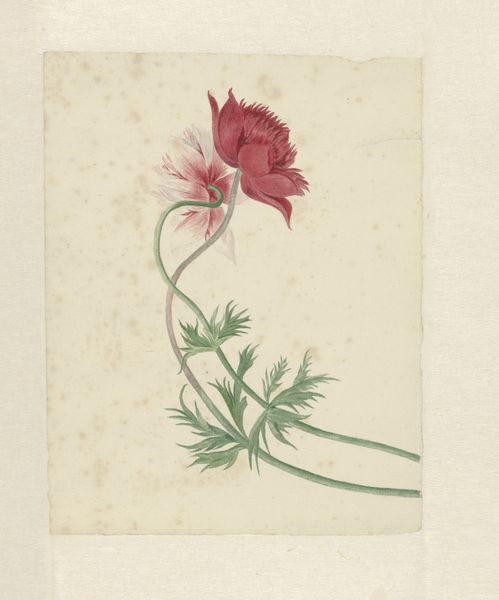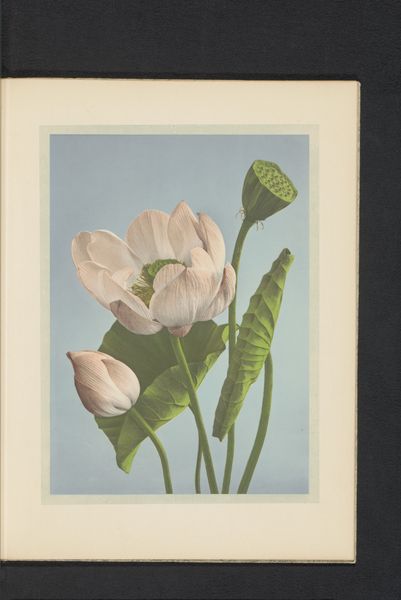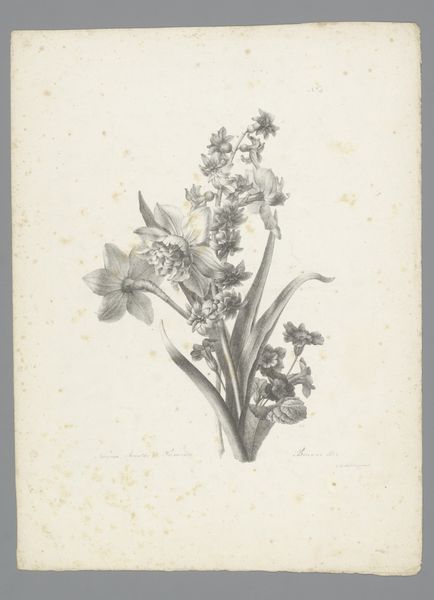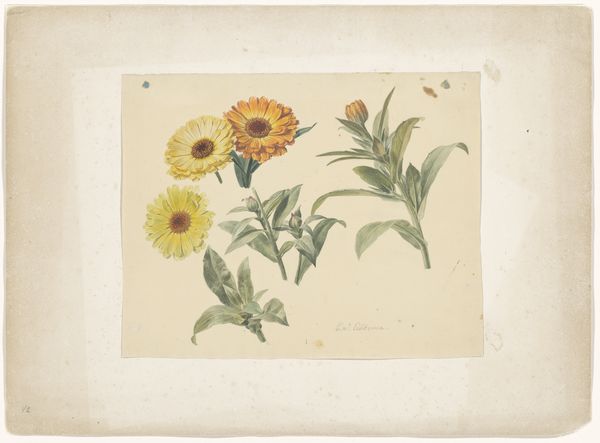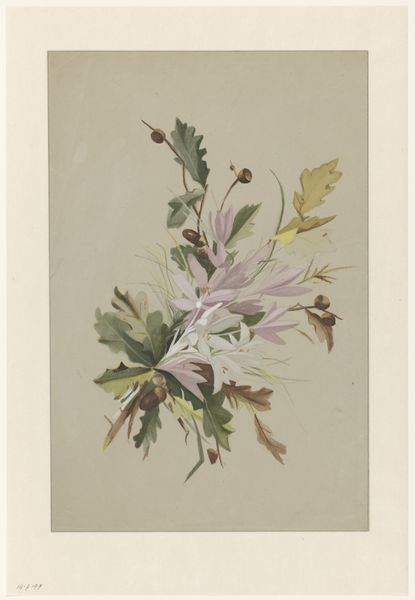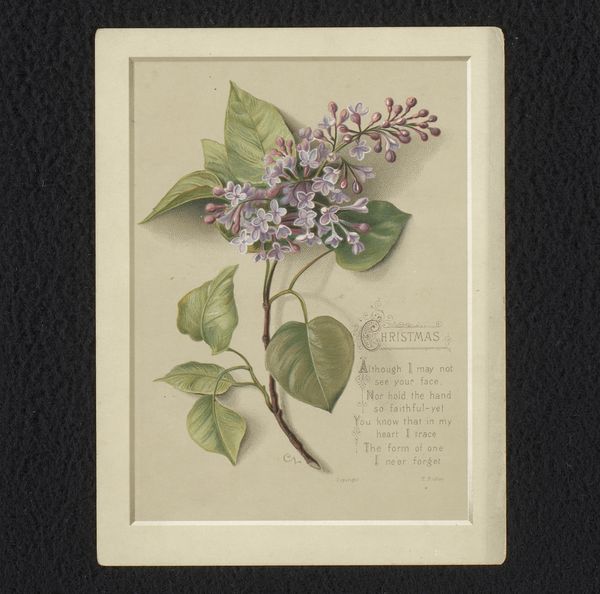
drawing, paper, watercolor
#
drawing
#
toned paper
#
water colours
#
paper
#
watercolor
#
romanticism
#
watercolour illustration
#
botanical art
#
realism
Dimensions: height 237 mm, width 188 mm
Copyright: Rijks Museum: Open Domain
Editor: This is Eelke Jelles Eelkema’s *Polemonium carneum*, made with watercolor on paper sometime between 1820 and 1828. It has a very clean and serene quality. What do you see in this piece beyond a simple botanical illustration? Curator: This image resonates with me precisely because it appears "simple." Consider the era. Eelkema painted this during a period of intense colonial expansion and scientific exploration. Botanical illustrations were not merely aesthetic; they were tools of empire, used to classify, catalogue, and ultimately control the natural world. Editor: So, the act of documenting nature itself was implicated in a power dynamic? Curator: Precisely. These illustrations contributed to a Western worldview that separates humanity from nature, positioning humans as its masters. The delicate beauty of the watercolor belies a deeper ideological framework. Think about who had access to this kind of knowledge, and whose knowledge was being marginalized or erased in the process. Editor: I never considered botanical art in that light. It’s easy to get lost in the pretty colors and delicate linework, but that context… it really changes things. Curator: Indeed. It prompts us to consider the ethical implications of even the seemingly benign act of observing and representing nature. Were indigenous perspectives and traditional knowledge systems about this plant respected, or were they simply overwritten by European scientific classifications? Editor: It definitely makes me think twice about the “neutrality” of scientific observation. Thank you, I've gained a new perspective on a seemingly simple drawing. Curator: My pleasure. Let's remember to question the power structures embedded within artistic and scientific representations.
Comments
No comments
Be the first to comment and join the conversation on the ultimate creative platform.


